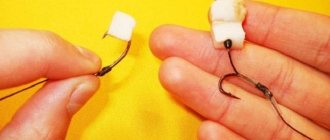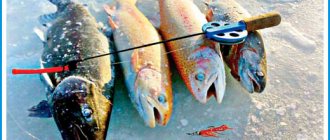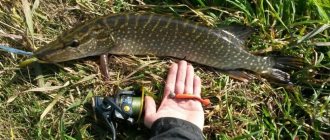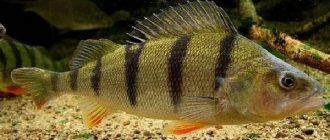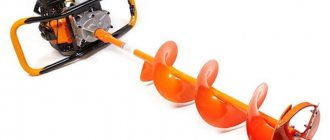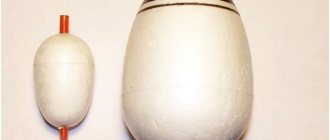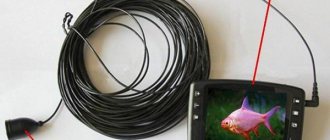Fishing boat
Hello dear modelers! I would like to share with you my experience of creating a radio-controlled fishing boat.
A couple of years ago I became interested in carp fishing. The reservoirs in our area are mostly wild. The fish living in them are accustomed to silence. After casting bait with a rod, a lot of noise is created, the fish gets scared, and for a long time does not approach the baited point. Therefore, it was decided to resort to technical means and build a boat for delivering bait. Looking through this topic on the Internet, I found many options for both homemade boats for fishing and industrial production. Buying a ready-made boat seemed unacceptable, since they are unreasonably expensive, bulky, and the technical content is not the best (brushed motors, lead batteries). The main task of a fishing boat is to deliver bait to a promising fishing point. Of all the options I found, I liked the idea of dumping bait from the Hercules carp boat (video can be found on YouTube). I started manufacturing with the most basic thing - the boat hull. The choice was made in favor of a fiberglass boat hull and a plastic deck. I made a model for applying fiberglass from a 5 mm thick laminate substrate.
I covered the model with masking tape to make it easier to separate the model from the fiberglass.
Next I applied five layers of fiberglass and EDF glue. The result is a durable and beautiful body. The steering wheel and steering wheel body were also made from plastic tubes and aluminum plates and glued into the body (I didn’t take a photo).
The deck was cut out of 3 mm organic plastic (used in outdoor advertising). The boat body is also cut out of 3 mm plastic. I bought the guides for the body at a hardware store. All plastic elements were glued with Cosmofen CA 20 glue. The covering was made with self-adhesive film, which is used in outdoor advertising. Photo of the deck from above.
To drive the body, I used a homemade rack and pinion gearbox. Three plastic gear racks 125 mm long were connected using a plastic U-shaped guide and hot-melt adhesive into one 300 mm rack.
The rack body was made from a U-shaped aluminum strip. The gearbox is driven by a 6V 132 rpm gear motor. Speed controller from a 1/24 scale car model with reverse.
The main task of controlling the operation of the rack and pinion gearbox is to turn off the drive at the end points, during unloading and when returning the body to its original position. To solve this problem, I used the following scheme. As sensors I used reed switches (SF1 in the diagram) and a neodymium magnet glued to the body. The location of the reed switches on the inner side was determined experimentally.
A deck with a motor and electronics installed on it.
Next, it was decided to paint the body white. Apply a layer of putty on the plastic and sand it.
I applied several layers of primer and spray paint. I painted it for the first time, it turned out not perfect, but overall good. I also glued in algae protection (metal mesh).
Installed all internal elements of the boat. The battery compartment is also made of 3mm plastic.
The motor frame is homemade, made of 1 mm stainless steel, glued with epoxy glue. Brushless motor inrunner 3650, 3000kV.
The steering servo is mounted on a 4 mm plastic frame. In order to prevent the boat from tilting forward, due to the location of the battery in the front, I glued in two lead weights of 120 grams each.
Installed dimensional LEDs. There are two red ones on the back, one white one on the front (I used a mini flashlight).
The side lights are turned on by a switch in the battery hatch.
I connected the deck and the hull of the boat with twelve M3*8 screws, pre-sealing it with silicone sealant, and installed a carrying handle. The handle is made of stainless strip 10*2 mm.
A short video of the boat in operation There is no video of its use on fishing yet, since our fishing season has not yet begun.
Electronics on board the model: Speed controller Mystery Fire Dragon 60A for aircraft models Engine HobbyFans 13T 3000kv inrunner Steering wheel Tower Pro MG995 Battery Zippy 5000mah 7.4 V 20-30c Lipo Receiver FLYSKY fs-r6b 2.4 GHz 6 ch LEDs with housing for car models
Body drive electronics: Geared motor 6v 132 rpm (M1) Speed controller Brushed ESC Two-Way Motor Speed Controller 10A Relay with normally closed contacts, 6V (K1, K2) Diodes KD 202 (VD1, VD2) Power transistors npn (VT1 , VT2) Resistors 1 kOhm, 0.25 W (R1, R2) Reed switch KEM-2 (SF1, SF2)
Technical characteristics of the model: Length 650 mm Width 320 mm Height 160 mm Weight 2.5 kg
Thanks everyone for watching! With respect, Roman.
Features and types of bait delivery boats
A carp bait boat can become an indispensable assistant when fishing. With its help, the fish will become easier prey. The operating principle of the radio-controlled device is as follows:
- Loading bait onto the boat.
- The boat is guided to the desired location using the control panel.
- At the desired point the bait is dropped.
- The boat returns to its original location.
The advantages of using such devices while fishing are obvious. Among the most basic are:
- high control radius and good maneuverability;
- the boat can take on board a load weighing from one and a half to five kilograms;
- The device can operate for up to two hours, while examining all areas of the reservoir;
- If you have an echo sounder, you can look for fish and see what is happening in the area.
You can use carp bait boats when fishing in reservoirs where you cannot use a boat and where there are a large number of impassable places.
There are three types of devices for feeding fish:
The first and second boats have a large carrying capacity, and the boat with a flat bottom perfectly overcomes thickets and quickly delivers bait to the right place.
Criterias of choice
When purchasing a bait boat in a store, it is recommended to pay attention to the following parameters:
- The range should be from 60 to 120 meters.
- The capacity of the bait compartment is selected depending on how much bait will need to be loaded during fishing.
- A flat bottom casing is best. It does not submerge in water and is able to overcome various obstacles.
- It is better to choose an oblong shape. In this form, the maneuvers of the boat in the form of moving away, approaching and turning will be visible from afar.
When choosing a bait boat, you need to pay attention to its control. In some models, the controls are such that they are very inconvenient to use.
Workpiece processing and work with small parts
We begin to make a model of a submarine with our own hands from wood. As soon as the workpiece is cut using the technology described in the previous section, it is necessary to carefully handle the cut areas, since they can easily injure you if handled carelessly. This can be done using medium-grit sandpaper. All edges should be smoothed especially well and any burrs should be removed.
If you pay attention to the drawing, you will notice several slots in the submarine model. They are made so that the master can then insert steering blades into them, which are also cut out of a sheet of plywood and thoroughly processed with sandpaper. The steering wheel should be rubbed with special care to create a part with a rounded front part. This way the submarine will look even more realistic.
The steering wheel must be glued using regular water-repellent glue. Be sure to follow the instructions on the package during this process! Remember that it is the pressure, not the duration, that matters when joining two pieces together. It will be enough to properly fix the parts in one place and press them well together. After that, the glue will do the rest of the work.
DIY bait boat - drawing, assembly steps
To make bait boats you will need to spend a lot of money, the size of which will depend on the equipment of the device. In addition to the fact that the boat requires a good source of energy, it can additionally be equipped with a navigator, backlight and echo sounder.
To make a carp boat with your own hands , you will need:
- two motors (gearbox and drive), which can be taken from an old cassette recorder;
- epoxy resin;
- reinforced fiberglass;
- gearbox for a children's car (reduction ratio about 1:75);
- stainless wire for antenna;
- mounting rails for engines;
- housing from the control panel for the PU boat;
- four-blade propeller 500 mm made of stainless steel;
- screw shaft 2.5 mm stainless steel;
- two drums for discharging bait and sinkers.
You can buy all the parts in stores or online. The operating voltage of the motor and battery must be the same.
Stages of assembling a radio-controlled boat:
- A drawing of the future boat is made on thick paper.
- The sketch is cut along the cut lines and folded along the fold lines. The shape of the future boat has been set.
- Thick paper is glued together, and excess edges are cut off from the sides.
- To impart hardness, the inside of the paper mold is filled with clay, paraffin or plasticine.
- The body is turned upside down and the required size of fiberglass is cut out.
- The fabric is applied to the hull, and then starting from the bottom, epoxy resin is applied to it. The entire fabric is coated up to the sides.
- After the resin has dried (after 3-4 hours), you need to look at the thickness of the body. If it is thin, then you will need to apply another layer of fiberglass and coat it with epoxy. As soon as the resin dries well, flaws are removed from the body.
- Wooden slats are installed at the stern, to which the engines, electronics and antenna are attached. The engine should form an angle of approximately 10 degrees with the bottom of the boat.
- In accordance with the sketch of the boat, the drums are located and mounted.
- The engine casing is half filled with lithol, after which the propeller shaft is installed into it.
- A propeller is installed on the shaft.
- An electrical circuit is drawn up for the receiver and transmitter of the device, on the basis of which a board is soldered, providing future communication between the transmitter and the receiver.
This radio-controlled boat is made by hand. Now it can be equipped with additional equipment. To use the boat at night, you can install LEDs on it .
They will simplify management in the dark and significantly increase the catch. An important point in the manufacturing process of the device is the calculation of its displacement. It depends on the following indicators:
- range of the boat;
- expected volume of imported bait;
- additional equipment that the boat will be equipped with.
The displacement can vary from 2.5 to 12 liters.
Echo sounder equipment
When fishing, it is useful to see the bottom topography and the concentration of fish . A wireless echo sounder will help with this, the operating depths of which should be from 0.6 to 30 meters. The signal from the echo sounder can be transmitted to an additional screen or to the control panel.
Fish bait boat with navigator
Using the GPS option, during fishing, feeding point is programmed , where the boat ends up. The entered coordinates will be stored in memory until they are changed on the next fishing trip.
Making a radio-controlled bait boat with your own hands is not at all difficult if you have some experience and knowledge. It will turn out not only much cheaper than ready-made models, but also better than the Chinese devices offered in stores.
Layout
The boat measures 60cm in length and 7.5cm in diameter. Inner diameter 71mm. The plugs extend 2.5cm each.
Inside the case is divided into “compartments”.
- 1 - battery and receiver
- 2 - tank
- 3 - pump
- 4 - servos and speed controllers
- 5 - main motor
The tank must be in the middle so that the boat sinks horizontally (there is no trim).
The fastening elements are made of 5mm thick porous PVC sheet. Then they are tightened on iron pins located along the body. The rear plug should also be secured to studs to ensure the rigidity of the assembly with the motor and steering rods.
Initially, stroke controllers were used to control the motor and pump. But their reverse is much slower than forward rotation, which is not convenient for the pump. During testing, I did not install a separate UBEC power circuit and used the built-in 1 amp BEC. Because I received a defective servo that jammed, at that moment the current jumped and burned the entire regulator.
The 550 series motor is redundant for a model of this size; you can get a smaller one. It is attached with screws to a special bracket to the rear plug. Connection to the shaft through a brass coupling.
It is also worth installing Fail-safe modules on the pump and motor channels. The engine is set to turn off, and the pump is set to purge the tank.
All drawings are on a separate page.
How to make a radio-controlled boat for delivering bait while fishing
This homemade product will be very useful for fishermen. With its help you can accurately and almost silently deliver bait when fishing. The author took a catamaran as the basis for creating a homemade product. The result is a reliable, powerful vessel that is not afraid of algae and other similar obstacles, which cannot be said about cheap Chinese boats. Of course, there are also better quality models on sale, but for them you will have to pay a significant amount, but why pay more, because you can assemble an excellent boat yourself, and besides, it’s interesting.
Materials and tools for assembly: - plywood, coroplast, plastic (or other materials to create a body of your choice); - hot glue; — aluminum profile (the load-bearing frame is made from it); — polyurethane foam; — motors type XK2845-B-3700KV;
— HXT 4mm Gold Connectors; - cutting tool, soldering iron, paint, etc.
Homemade manufacturing process:
Step one. Boat hull
The boat hull can be assembled from various materials. Plywood is also quite suitable, which can then be covered with fiberglass cloth and epoxy resin. It is preferable, of course, to use plastic, since it is lightweight, easy to work with, and it is not afraid of moisture. The body is glued end to end. Then fabric is glued to the outside at the joints for sealing.
Step three. Boat electronics
To prevent water from passing into the vessel, it is necessary to install a stern tube, as well as a set of propeller, shaft and coupling. The motors used here are XK2845-B-3700KV.
To control the motors, you will need two Birdie 50A type regulators with 3A BEC; they are water-cooled, as well as reverse, which allows you to turn the boat.
To open boxes of bait, you will need two servos. However, if both compartments open simultaneously, one servo will be enough. Servo motors must be in a dust- and moisture-proof housing, HK-15139 can be used successfully. For radio control, a Turnigy 9x with 9 channels is used.
As for the power source, two B-Grade 4000mAh 3S batteries are used here, or you can take two more expensive Turnigy nano-tech 4000mah types. To connect the regulators to the batteries you will need HXT 4mm Gold Connectors.
According to the author, the homemade product cost him 5,870 rubles. If you compare it with store prices, then you need to shell out all 30,000 rubles. But these are not high-quality boats with brushed motors, which last about 20-30 trips. Then you need to change either the brushes or the motors. It also uses outdated equipment that operates in the FM range. This type of communication may cause interference and control of the boat can easily be lost.
As a result, after purchasing a new boat, they usually begin to change the engines, installing brushless ones, and along with them the regulators have to be changed. Also, over time, you have to change the radio transmitter. The batteries, which are made of lead, also quickly fail. As a result, a person buys for 30,000 only a boat hull and a pair of servos, which cost no more than 300 rubles. So, for those who decide to have such a thing, it will be much more profitable to assemble the boat yourself.
Making a radio-controlled boat for baiting fish
Such a radio-controlled cargo ship does not need speed, so you don’t have to think about contours. The main thing is capacity, load capacity and stability.
The above requirements are well suited to a type of vessel such as a catamaran. We will build on this.
Look at the body sketches in a 3D editor. This is exactly what an unpretentious boat for delivering bait looks like. This boat will have 2 motors that rotate water jets; the turn is carried out by reversing the thrust of the engines. This allows the RC fishing boat to turn around almost on the spot.
The ship's hull can be made from anything. You can use plywood and then cover it with fiberglass and epoxy resin, but it is better to use PVC or plastic for making advertising stands. Coroplast also works well.
Plastics do not rot and do not require impregnation or complete covering of the body with fiberglass.
The body is glued end-to-end, and the joints are glued on the outside with a strip of fabric; this can be done at the last moment before painting.
A powerful power frame is made of aluminum profile along the top of the boat. This allows you to distribute the load over the entire body and attach a convenient handle for carrying.
The bow compartments are filled with polyurethane foam, the same can be done with the aft compartments after installing the deadwood tube. This will make the ship unsinkable, since foam is much lighter than water.
The water-jet propulsion unit is very simple to manufacture - it is a water propeller located in a ring tube and the water supply channel is closed by a grid. This solution allows you to protect the propeller from winding up algae or gear.
See about copters: Radio-controlled airplanes for beginners
In order to prevent water from entering the vessel, it is necessary to install and.
Motors are used.
The cost of a deadwood pipe is 200 rubles, the shaft with a propeller is 160, the motor costs 600 rubles. Total 960 rub. You will need 2 pieces of this in total.
You can go the other way and put . The cost of one such engine assembly is 2,700 rubles, but everything is already installed in it and even a water supply has been made to the engine cooling radiator. However, for a slow-moving boat, delivering bait is not necessary.
Motors will require regulators, take them. Cost 490 rubles. It has a water-cooling radiator and reverse speed (this is necessary for turns on water-jet propulsion).
2 regulators are also required, so another 900 rubles and it turns out to be 1860.
To open boxes with bait you will need 1 or 2 servos. 2 – if you open each compartment independently. Yes, and it’s easier to install a servo on the compartment.
We take inexpensive servos in a dust- and moisture-proof housing, they are perfect, they have a force on the shaft of 3.5 kg, the cost is 145 rubles. Total 2150.
Operating procedure
1. Assembling the hull of a catamaran boat. - draw a sketch of the boat:
- Having made the markings, cut along the red lines; — bend along thin lines and bend angles: 1 – tilt of the bow of the boat; 2 — raising the bow of the boat; 3 – lifting the stern; 4 – tilt of the stern; - fasten the bent parts with paper clips; - glue the paper with any glue, after which the shape of the boat will be ready; — measure the displacement of the boat; — we will make the form rigid, for which we will wrap the body inside with cellophane and fill it with filler; — epoxy mass is applied to the resulting blank, wrapped in fiberglass; — after hardening, the body can be easily removed; — a second hull is also being made for the catamaran.
Radio controlled fishing boat
A radio-controlled fishing boat is a real find that any craftsman can build with his own hands. With its help, bait is delivered over long distances. You can buy such a product in a specialized store, but after several fishing trips it will break. Naturally, there are very high-quality models, but their cost is also impressive. It’s better to build a radio-controlled boat yourself, so you can be sure that it’s in good working order, and you’ll only need a few spare parts.
Required materials and tools
This is not to say that assembling such a small vessel is very easy. But if you follow the instructions, it will only take a day to make a homemade product.
First you need to collect the necessary material and tools:
- fiberglass, plywood or other material from which the hull of the boat can be cut;
- power frame made of aluminum profile;
- hot glue (or other means for fixing parts that will be resistant to water);
- polyurethane foam;
- engine;
- regulators;
- equipment for controlling the boat;
- a battery that will power the motor;
- wires and connectors for connecting and connecting all components of the circuit;
- soldering iron;
- stern tube;
- a shaft with a propeller, thanks to which the boat will move;
- hacksaw or jigsaw.
The design of the device can be absolutely anything. The main thing is that it is effective. To do this, it is important to correctly calculate the displacement of this small vessel.
In general, such a small boat is considered a real find, because the fisherman does not have to think about how to deliver bait over a long distance. In addition, you can attach an echo sounder to it and examine the reservoir in search of the most fishing place.
Battery and charger
An inexpensive computerized charger allows you to charge directly from a car battery. Costs 680 rubles.
We take LiPo batteries - these are the best that can be found on the model market.
We put 2 batteries in the cart for 380 rubles, the total price became 5710.
See about copters: Gyroscopes and autopilots for radio-controlled models
You can not skimp and take the top ones, 2 pieces for 1150 rubles and the total price will be 8150 rubles, but since fishing is not every day, it is cheaper to change cheap ones every 3-4 years.
To connect the batteries to the regulators, we take connectors, this will add 160 rubles.
And here is a video of how a homemade boat sails to deliver bait across the lake.
I’ll talk about connecting all the electronics in a separate article, but for now, let’s summarize.
Product manufacturing technique
It’s not difficult to make a radio-controlled boat for fishing with your own hands, you just need to follow the sequence of work:
- Manufacturing of the body. If plywood is used, you will additionally have to line it with fiberglass and coat it with epoxy resin. This will help protect the material from rotting. It is necessary to cut plywood or fiberglass according to a previously drawn or downloaded diagram. In order to seal all seams, polyurethane foam is required.
- Installation of the power frame. Thanks to it, the load on the hull is distributed evenly, and it remains afloat. The bow of the boat can be filled with foam, which guarantees its unsinkability.
- Installation of a pipe with a screw. The blades of the driving component remain inside the housing, so they will not get tangled in weeds, injure fish, or snag on snags. The pipe opening must additionally be covered with a grill.
- Arrangement of the electronic part. Now the engine, stern tube, shaft with coupling and propeller are installed. In order for a fishing boat to sail in a given direction and turn, it must be equipped with regulators.
- Installation of servomotors for opening containers with bait. They must be located in housings that do not allow dust and moisture to enter.
- Installation of batteries.
To control the product, it is better to choose a five-channel radio system that is installed on toys.
Assembly of the structure
When you have the materials and drawings, you need to start working. The first step will be cutting out the parts from plywood. For this, it is best to use a jigsaw. It is important to cut exactly to size, otherwise the design will not fit together.
Then the frames are glued to the rear side; these parts will be very heavy. If the watercraft requires a motor, then the rear side is strengthened.
READ How to make ax handles with your own hands?
The next step will be to attach the transom to the sides and bottom. The sheathing parts must be secured with glue.
After assembling the structure, you need to prepare aerosil and epoxy resin. These substances are mixed 1 to 1. The resulting substance is used to seal seams. Also for this purpose, inside the boat, the seams are sealed with strips of fiberglass.
Important: this type of work uses very toxic substances, so you need to work outside, or in a ventilated area, and using special protective equipment.
When the glue dries, you need to install the frames. Then you need to install seats, luggage compartments and other elements. After the vessel has dried, it is necessary to proceed to the final stage, which is sanding and sealing with fiberglass and epoxy mortar.
This is followed by the process of painting the structure, this will help further protect the vessel from the influence of water and give it a good appearance.
Painting consists of:
- Degreasing of all parts of the vessel;
- Treatment of wooden elements with impregnation;
- Surface putties. This will mask all defects;
- Primers. To do this, you can use boiled drying oil;
- Application of paints and varnishes. To do this, you can buy any paint, but special waterproof materials for plywood will help increase the service life of the boat;
Useful tips
As you can see, a DIY fishing boat can be made quickly.
In addition, there are other useful recommendations that will help not only design the product yourself, but also make it durable:
- it is better to choose fiberglass rather than plywood, because it is much lighter and does not require additional protection from moisture, since it is not susceptible to its negative effects (this material is also highly durable);
- the selected battery must have sufficient capacity so that the boat does not stall in the middle of the pond, but it is also important to pay attention to the weight of the component (it should not weigh down the structure too much);
- the boat can be additionally equipped with lighting and a navigator - this will make it possible to carry out night fishing;
- In order for the product not to go under water, it is necessary to correctly calculate the displacement, which ranges from 2.5-12 liters (this is affected by the distance the ship floats, the amount of feeding, and the weight of the necessary equipment).
Why do you need to treat a ship?
Every happy owner of a wooden ship, who bought it or made it with his own hands, dreams that it will serve him as long as possible. This requires proper and high-quality processing of a wooden boat. Measures to preserve the vessel should be taken seriously, otherwise it will become unusable in two to three years without proper care.
The question often arises: how to tar a wooden boat? Before starting this work, the watercraft should be thoroughly cleaned and given sufficient time to dry. If this is neglected, the resin will not adhere well. Now you can start preparing the substance itself (two buckets are enough) so that it becomes liquid. To a very hard resin, it is necessary to add a little waste or fuel oil so that it acquires viscosity. Otherwise, the substance will break off upon impact.
While one resin is boiling, you can dissolve another resin in gasoline and lubricate the inside of the vessel with this solution, then wait for it to dry, then it will not stain clothes. Before impregnating a wooden boat, you need to double-check that the wood is dry. The solution should be applied in an even thin layer. Gasoline will penetrate deep into the tree and destroy all organisms and fungal growths that cause rotting. Such prevention allows us to answer the question: how to treat a wooden boat so that it does not rot. Then the vessel must be turned over and thoroughly watered with liquid resin on the bottom and its underwater part, spreading it with a wooden spatula. The bow and stern need to be treated especially carefully, covering all the cracks. Allow the resin to dry well (up to 24 hours).
There is one more feature that you need to know: how and how to treat a wooden boat so that it does not leak. The whole secret lies in what kind of resin is used. Coal tar will usually quickly begin to break down the wood with its chemical action. And you need to use tar, which will thoroughly protect the wood from corrosion.

